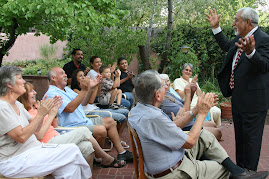
· After more than 30 years of San Juan-Chama water flowing in the Río Grande, the river ecosystem, the Bosque, those with domestic wells, and other users have become dependent on those flows; removing them will cause harm.
· Removing up to 94,000 acre feet per year (afy) of water from the river between the Alameda diversion point and the south side wastewater treatment discharge near Río Bravo will seriously dewater the river as it flows through the heart of the city, harming the Bosque and the river ecosystem.
· Dewatering this long stretch of the river will deprive the aquifer of a significant source of recharge.
· Dewatering the river will aggravate the already very large impact on the river
from decades of groundwater pumping, which has led to an estimated loss from the
river of almost 70,000afy (Albuquerque uses a little over 100,000 afy by comparison). The WUA will likely need to find water rights to cover this loss, which has been masked by the flows from the San Juan-Chama water.
· Dewatering the river will increase the impact of the wastewater discharge, which will be more concentrated as it enters the river. Several studies of this part of the river confirm two national surveys documenting the relationship between wastewater discharges and the presence of pharmaceuticals, endocrine disrupting compounds (like steroids and estrogen), and personal care products (like insect repellant and sunscreen) in rivers. The impacts of these chemicals on aquatic life are becoming well documented and studies are beginning to suggest an impact on humans from chronic low-dose exposure to these same chemicals.
· Removing the San Juan-Chama water from the system and plans that the WUA has for additional withdrawals means that the burden of finding sufficient water rights to meet a variety of deficits will fall on agriculture. The WUA is already seriously deficient in required water rights to offset its activities. While many believe agriculture “wastes” water, the irrigation system and water put on fields now is a major source of aquifer recharge, a job originally performed by the river. Furthermore, analysis of the amount of water rights that the WUA (and others in the region) would need in order to get into compliance with water law in the state greatly exceeds ALL the agricultural water rights held in the Middle Río Grande; taking them would turn the region into a brown and lifeless zone.



